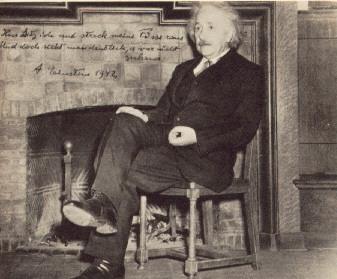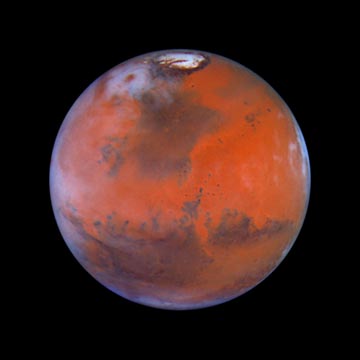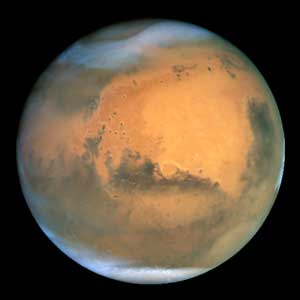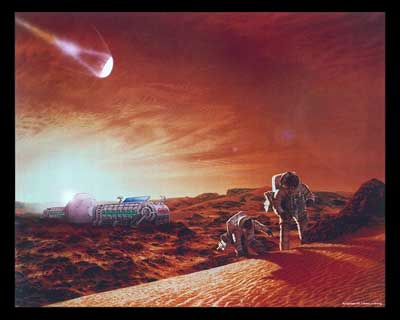



The star of Isis, called Sothis, or Sirius, is the brightest star in our night sky. Modern astronomy has determined that it is only 8 1/2 light-years distant, and traveling directly towards Earth at many thousands of miles per hour. The Ancient Egyptians believed that Sirius had a tremendous effect upon life on our planet.
The system of Sirius contains two known stars, the first binary star system discovered. The larger and brighter of the two, Sirius A, is three times the mass of our sun, and over ten times as bright. Shining with a brilliant blue-white radiance, Sirius A easily overshadows her darker companion star. Sirius B is a "white dwarf" star, invisible to the naked eye and packing the equivalent mass of our sun into an incredibly dense globe only 4 times the diameter of our Earth.
The Sirius system is directly "upstream" of our solar system within the galactic arm of our Milky Way Galaxy. Because of this, we now know that the polarized energies of Sirius do indeed wash over us. Modern science is yet to discover if this vast current of highly charged particles affects solar activity or life on Earth .
By coming directly towards us, Sirius creates an axis of rotation with Earth relative to the stellar background. Because of this, of all the stars in the sky, only the annual heliacal rising of Sirius exactly matches the length of our solar year, 365.25 days.
The Ancient Egyptians were somehow aware of this unique relationship between our system and Sirius and marked the heliacal rising of Sirius as the first day of their calendar year.
Even today, unbeknownst to most of the people of the world, our News Years Eve celebration is a continuation of a most ancient ritual honoring the return of Sirius to the midheaven position at midnight. Occurring down through the ages around January 1st, this midnight alignment marks the moment when the energies of Sirius, directly overhead, most closely touch our lives in her most singular purity. For countless thousands of years and all around the world, without knowing the hidden reason, we have marked this midnight moment by jumping for joy as the rush of this vital connection surges through us.

Sirius B traces an elliptical orbit around Sirius A, and their common center of gravity, directly face onto the Earth like the dial of a clock. Taking 50 years to complete their orbit, the period of closest connection, called the periastron, is a time when the radiated energies of these two great stars is especially intense.
Sirius B spins on it's axis at an incredible 23 times a minute ( 23 rpm!!), generating an enormous magnetic field. As it approaches periastron, it begins to pull huge amounts of gas and material away from its less dense companion.
The gravitational attraction of these stars for each other and the energies they release at this time of closest communion is difficult, if not impossible for the human mind to comprehend.
Vast amounts of electromagnetic radiation, including visible light, ultraviolet, X-rays, gamma rays and beyond, are thrown into space. The extra gas and material Sirius A provides for her companion re-ignite fusion reactions within Sirius B, and once again, her eternal lover, now blazing brightly, is reborn.
As Sirius B moves past periastron, the light generated by their shared energies begins to diminish until eventually, it resumes its role as her "Dark Companion".
As Robert Temple has shown in his book "The Sirius Mystery", the Ancient Egyptians were aware of Sirius B and the orbital dynamics of the Sirian system in predynastic times, before 3200 BC. Modern astronomy did not discover these facts until over five thousand years later, in 1862.


SIRIUS: The Brightest Star in the Night
Credit & Copyright: Juan Carlos Casado
Explanation: Sirius is the brightest star in the night sky. Sirius is visible on the far left of the above photograph, to the left of the constellation of Orion and Comet Hale-Bopp. Intrinsically, Sirius is over 20 times brighter than our Sun and over twice as massive. As Sirius is 8.7 light years distant, it is not the closest star system - the Alpha Centauri system holds this distinction. Sirius is called the Dog Star because of its prominence in the constellation of Canis Majoris (Big Dog). In 1862, Sirius was discovered to be a binary star system with a companion star, Sirius B, 10,000 times dimmer than the bright primary, Sirius A. Sirius B was the first white dwarf star discovered, a type of star first understood by Subrahmanyan Chandrasekhar in 1930. While studying Sirius in 1718, Edmond Halley discovered that stars move with respect to each other. There is conflicting evidence that Sirius appeared more red only 2000 years ago.

I have often dreamed of visiting another planet, as no doubt many other earthlings have done also. But never in my wildest dreams did I ever expect it to actually come true. We left on a saucer-like ship that sped across the universe at a leasurely 'Warp 6' (ie. 216 times the speed of light: or over 4 million miles per second!).
It has always amuzed me how incredibly stupid humans actually are. First, they declare in the late 1800's that no one can travel in a motorcar faster than thirty miles per hour and still breathe. Ridiculous!


SORRY EINSTEIN,
Light can break its own speed limit.
July 20, 2000
Web posted at: 2:16 p.m. EDT (1816 GMT)

-------------------------------------------------------(AP) -- Scientists have apparently broken the universe's speed limit.
For generations, physicists believed there is nothing faster than light moving through a vacuum -- a speed of 186,000 miles per second.
But in an experiment in Princeton, New Jersey, physicists sent a pulse of laser light through cesium vapor so quickly that it left the chamber before it had even finished entering.
The pulse traveled 310 times the distance it would have covered if the chamber had contained a vacuum.
Researchers say it is the most convincing demonstration yet that the speed of light -- supposedly an ironclad rule of nature -- can be pushed beyond known boundaries, at least under certain laboratory circumstances.
Not so impossible
"This effect cannot be used to send information back in time," said Lijun Wang, a researcher with the private NEC Institute. "However, our experiment does show that the generally held misconception that `nothing can travel faster than the speed of light' is wrong."

Our first stop was in the Alpha Centauri system, 4.3 light years away.

Alpha Centauri: The Closest Star System
Credit and Copyright: STSci Digitized Sky Survey, Anglo-Australian Observatory
Explanation: The closest star system to the Sun is the Alpha Centauri system. Of the three stars in the system, the dimmest -- called Proxima Centauri -- is actually the nearest star. The bright stars Alpha Centauri A and B form a close binary as they are separated by only 23 times the Earth- Sun distance - slightly greater than the distance between Uranus and the Sun. In the above picture, the brightness of the stars overwhelm the photograph causing an illusion of great size, even though the stars are really just small points of light. The Alpha Centauri system is not visible in much of the northern hemisphere. Alpha Centauri A, also known as Rigil Kentaurus, is the brightest star in the constellation of Centaurus and is the fourth brightest star in the night sky. Sirius is the brightest even thought it is more than twice as far away. By an exciting coincidence, Alpha Centauri A is the same type of star as our Sun, causing many to speculate that it might contain planets that harbor life
------------------------------------------------------------------------------------
Alpha Centauri, triple star system, also called Rigil Kent, in the constellation Centaurus. To the unaided eye, Alpha Centauri appears as a single star with an apparent magnitude of -0.1, making it the third brightest in the sky. The two bright stars (Alpha Centauri A and B) have apparent magnitudes of -0.01 and 1.33 and orbit each other with a period of 80 years. The faint star Alpha Centauri C has an apparent magnitude of 11.05 and orbits its companions with a period of perhaps 1 million years. Alpha Centauri C is also called Proxima Centauri because, at a distance of 4.3 light-years, it is the closest star to the solar system.
MSN ENCARTA

The Planet of Haz is the fourth planet circling the second sun in the Sirius system. It resides about 230 million miles from Sirius B. A deep rich redness covers the planet much of the time because of the soil coloration, but has a tendency to fade to the blue end of the spectrum when approching Sirius A.

Note the distinction between the continents and oceans.
See also the polar ice caps.

The mountain ranges to the north protect the southern regions from hosile 'Siberian' winters and allows for a temperate climate year round.





Haz: The Land of Eternal Sunsets!

Thank you for visiting my page at Tripod. Please come back and visit again!